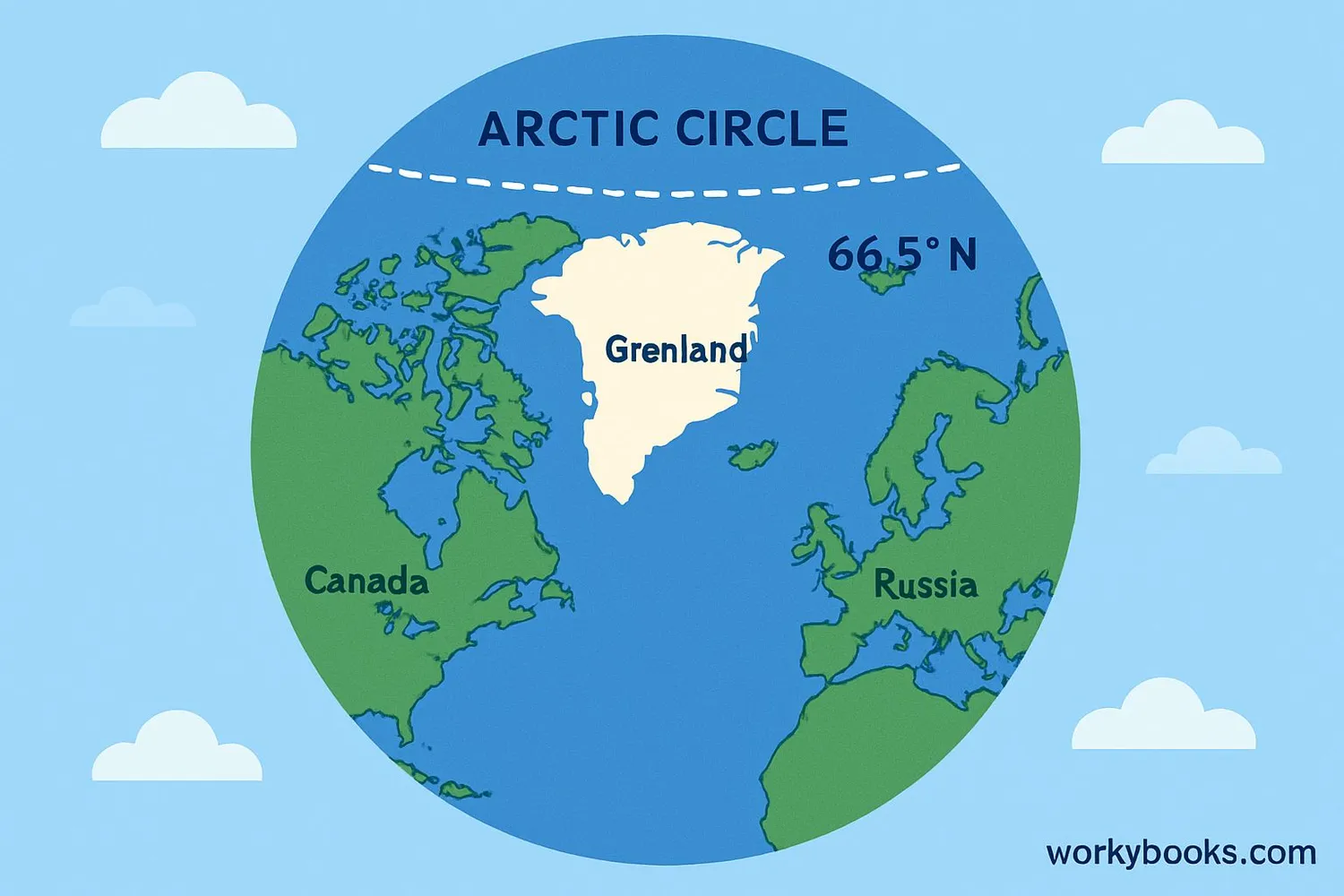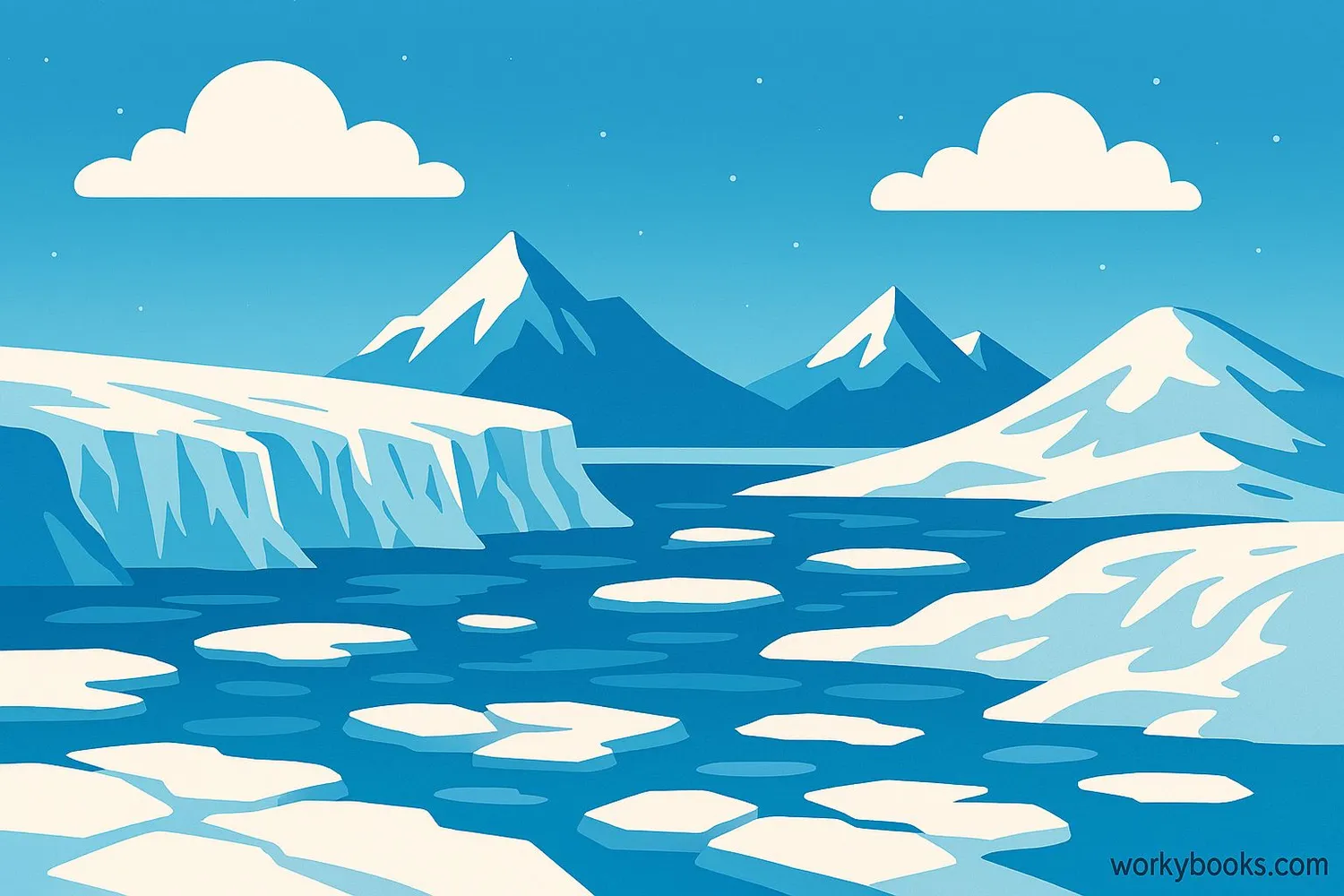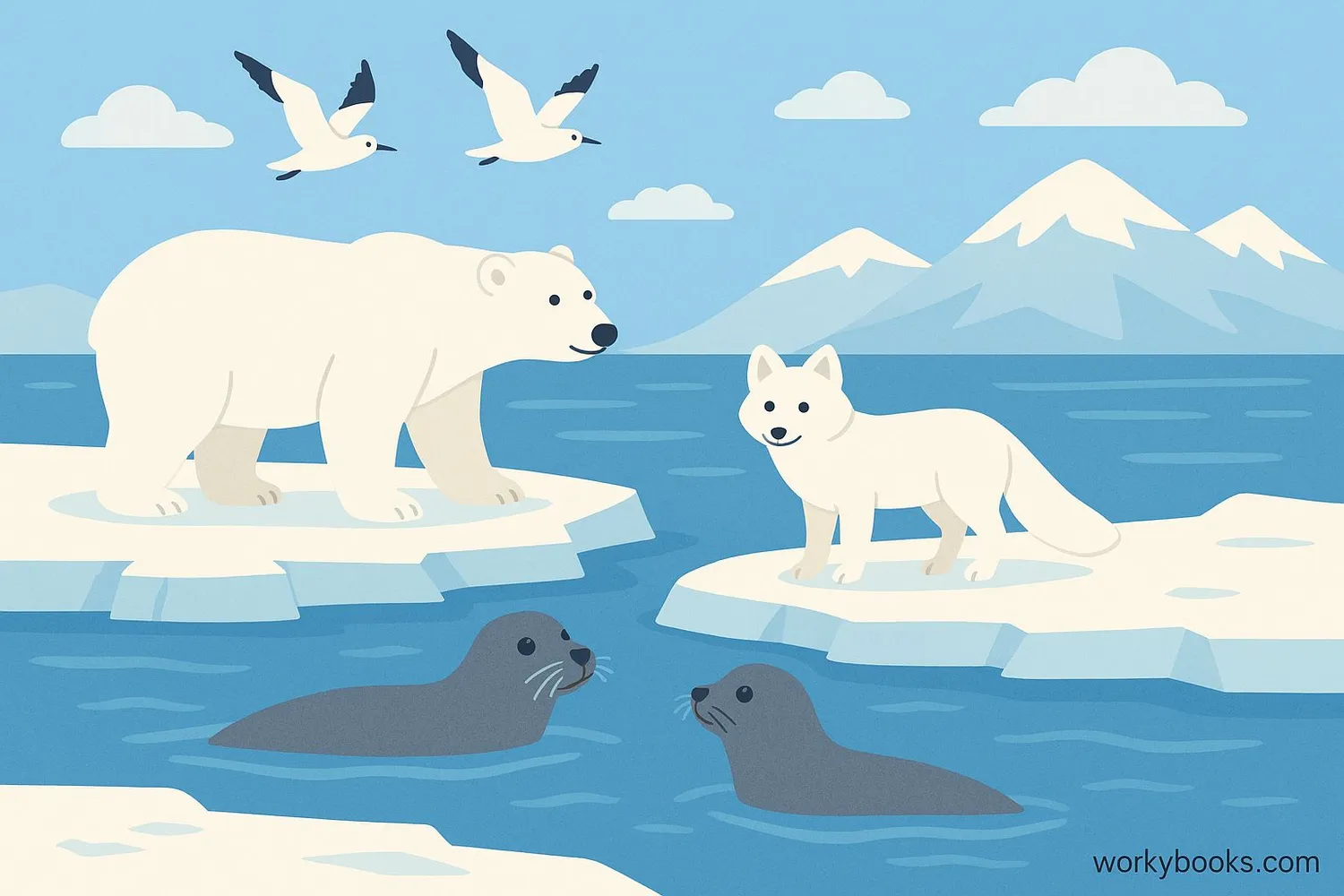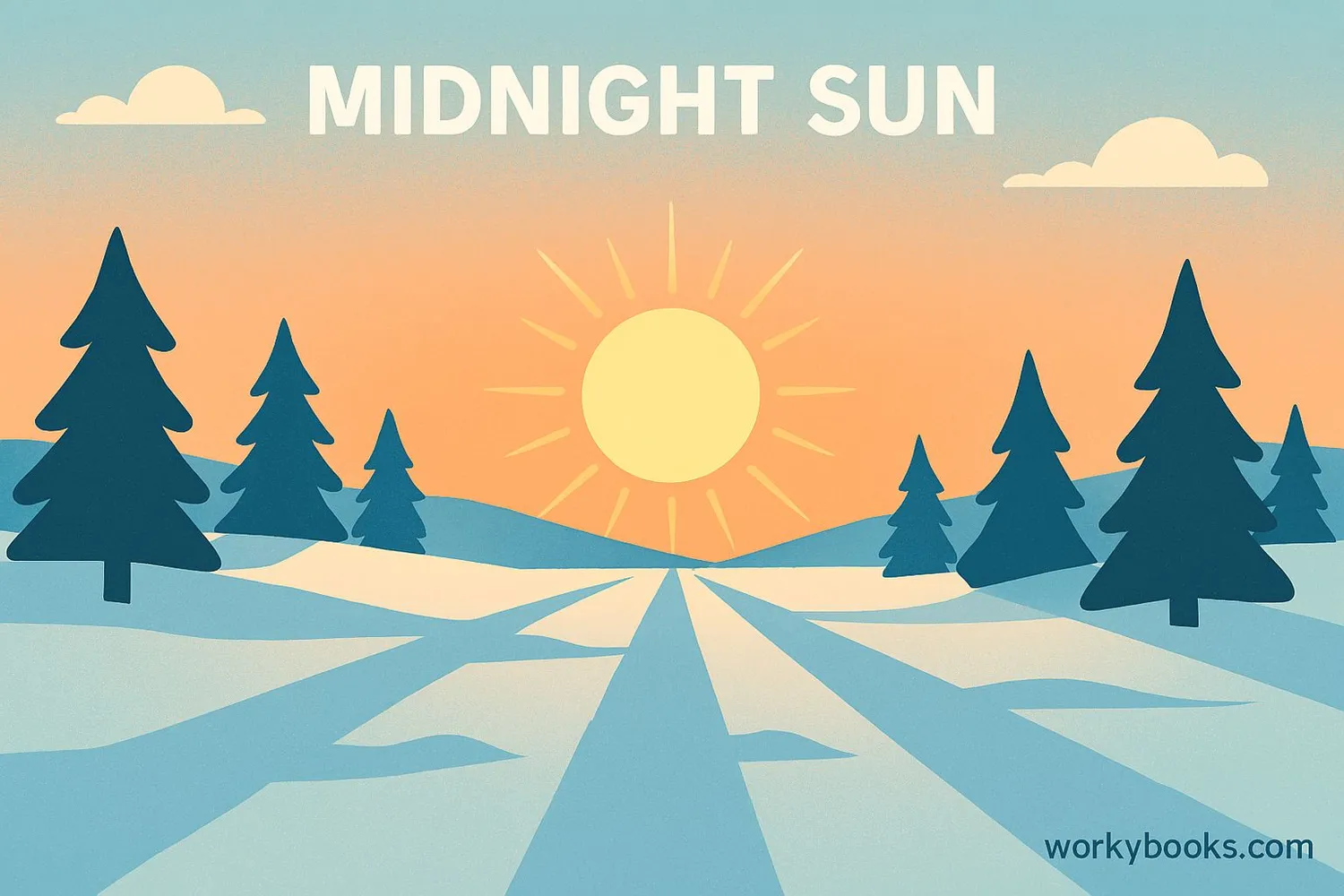The Arctic Circle - Definition, Examples, Quiz, FAQ, Trivia
Discover the northern polar region of our planet
What is the Arctic Circle?

The Arctic Circle is an imaginary line that circles the Earth at approximately 66.5° north of the Equator. Everything north of this line is considered part of the Arctic region.
This special latitude marks the area where, for at least one day each year, the sun doesn't set (midnight sun in summer) and for at least one day doesn't rise (polar night in winter). The Arctic Circle passes through eight countries: Norway, Sweden, Finland, Russia, the United States (Alaska), Canada, Denmark (Greenland), and Iceland.
Geography Fact!
The position of the Arctic Circle isn't fixed—it slowly changes over time due to variations in Earth's axial tilt!
Geography and Climate

The Arctic region includes the Arctic Ocean and parts of surrounding landmasses. The geography is characterized by:
Ice Caps
Massive sheets of ice that cover land areas like Greenland
Permafrost
Ground that remains frozen year-round beneath the surface
Tundra
Treeless plains where only low-growing plants survive
Sea Ice
Frozen ocean water that expands in winter and shrinks in summer
The Arctic has a polar climate with long, extremely cold winters and short, cool summers. Average winter temperatures can drop to -40°F (-40°C), while summer temperatures might reach 50°F (10°C). Despite the cold, the Arctic is not a lifeless desert—it supports unique ecosystems specially adapted to these harsh conditions.
Climate Change Impact
The Arctic is warming about twice as fast as the global average, causing significant changes to ice cover and ecosystems.
Wildlife and Ecosystems

Despite the harsh conditions, the Arctic supports diverse wildlife specially adapted to cold environments. The food web is relatively simple but crucial for maintaining ecological balance.
Polar Bears
The largest land carnivores, perfectly adapted to life on sea ice
Arctic Fox
Changes fur color from brown in summer to white in winter for camouflage
Marine Life
Includes seals, walruses, whales, and many fish species
Arctic ecosystems include:
• Marine ecosystems in the Arctic Ocean
• Coastal areas where land meets sea
• Tundra with low plants, mosses, and lichens
• Freshwater systems like rivers and lakes
Many Arctic species have special adaptations like thick fur, layers of fat (blubber), and hibernation behaviors to survive the extreme cold. Migratory species like birds and whales travel long distances to take advantage of seasonal food sources.
Unique Phenomena

The Arctic is famous for unique natural phenomena caused by Earth's tilt and its position relative to the sun:
Midnight Sun
24 hours of daylight during summer months
Polar Night
24 hours of darkness during winter months
Aurora Borealis
Northern Lights created by solar particles interacting with atmosphere
The midnight sun occurs around the summer solstice (June 21) when areas north of the Arctic Circle experience 24 hours of daylight. Conversely, the polar night occurs around the winter solstice (December 21) when the sun doesn't rise above the horizon for 24 hours.
The Aurora Borealis or Northern Lights are spectacular light displays caused when charged particles from the sun interact with Earth's magnetic field and atmosphere. These are most visible during the dark winter months.
Length of Days
At the North Pole, the sun is visible for six continuous months from March to September!
Arctic Circle Knowledge Check
Test what you've learned about the Arctic Circle with this quiz. Answer all 5 questions to check your understanding.
Frequently Asked Questions
Here are answers to common questions about the Arctic Circle:
Interesting Arctic Facts
Discover some amazing facts about the Arctic Circle:
Massive Region
The Arctic Circle encompasses about 6% of Earth's surface area—approximately 7.7 million square miles (20 million square kilometers)!
Extreme Cold
The coldest temperature ever recorded in the Arctic was -90°F (-68°C) in Greenland! That's colder than most freezers.
Ancient Ice
Some Arctic sea ice is 4-5 years old, but the oldest and thickest ice has been declining rapidly due to climate change.
Longest Day
At the North Pole, the sun rises in March and sets in September, resulting in six months of continuous daylight followed by six months of darkness!





